Steps to Increase Website Speed 5x times Faster
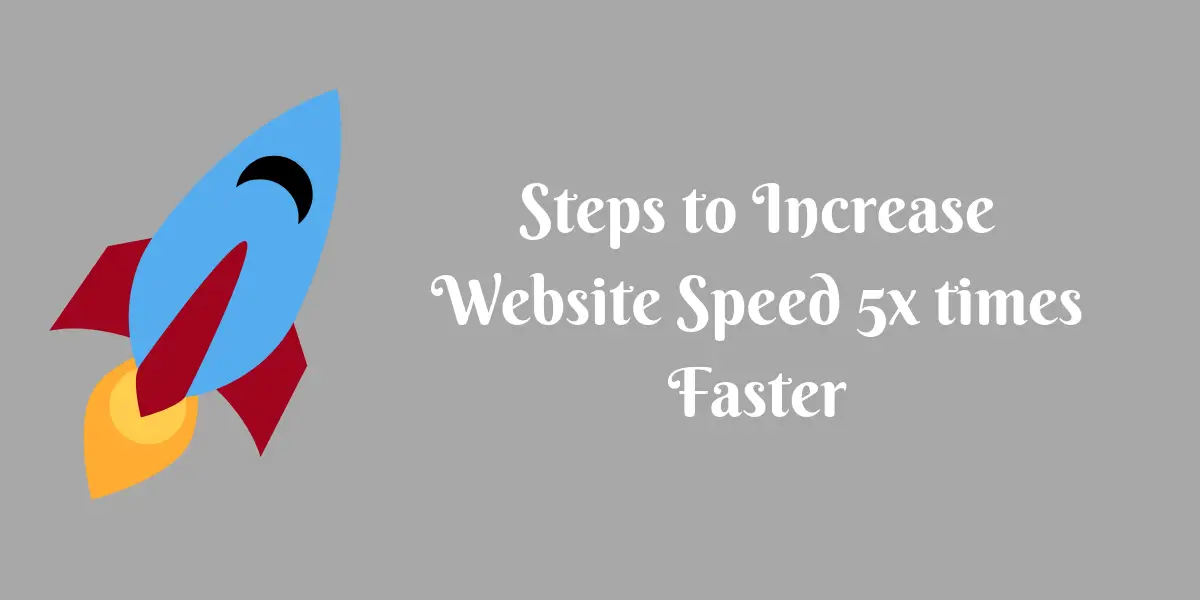
When it comes to website speed, the question is how fast is fast enough. So what is good website speed? If your site loads in just 2.9 seconds, its faster than around 50% of the web. Now if it loads in 1.7 seconds, it's faster than 75% of the web. If your site loads in just 0.8 seconds, well 94% of the web is slower. So you see, speed matters.
Why web speed matter? Google has shown that site speed (means page speed between server and user) is one of the signals used by google algorithms to rank pages. Page speed is very important to enhance user experience. Pages that have longer load time generally have higher bounce rates and also lower average time on page.
The ideal load time for your site is 2 to 5 seconds. But, every second beyond 2 seconds means higher bounce rates. Polls show that many internet users abandon a site if it takes more than 3 seconds to load. Many users want desktop sites to load in 2 seconds or less.
Before learning about how to improve the website to load faster, first let us know the facts in detail about the website speed.
Steps to Increase website Speed 5x faster
Website speed is a crucial factor for any website, If the page loading time is too slow. It not only affects the user experience but also impacts the search engine ranking of a website and also lead to lower user engagement and fewer conversions. Fortunately, there are some simple steps that you can take to make your website 5x faster. These include using a CDN, minifying javascript and CSS files, optimizing your cache settings, upgrading to a VPS hosting plan, and switching to an AMP design. All of these steps are easy to implement and will help you improve the performance of your website significantly.
Use CDN (Content Delivery Network)
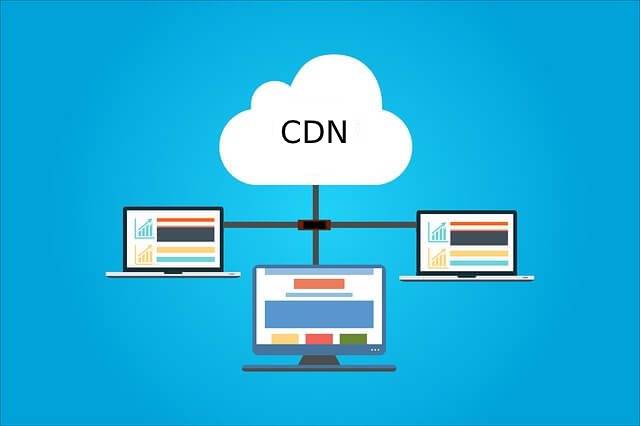
The content delivery network also called content distribution network is nothing but a geographically distributed network of proxy servers along with their data centers. The CDN offers high availability and great performance by distributing services spatially to final users. The CDN simply allows the fast transfer of assets that are necessary for loading internet content. This includes HTML pages, stylesheets, javascript files, images, and even videos.
CDN is an amazing solution to increase website faster. When you implement the CDN technique, your website contents stored in high powerful CDN servers in a different location and optimizes the content to load faster. When a user requests the web page, the static files will be served instead of accessing data from your server. This is widely used by big companies to serve the contents for larger number of website visitors
CDN is an efficient way to deliver content from your site or even a mobile app to people very quickly and efficiently based on where they are situated. The CDN also offers protection during periods of traffic surge as its quickly scalable.
WordPress users can easily use the best free CDN called Cloudflare. Cloudflare is powered by 115 datacentres that offer speed, protection, and reliability against DDoS attacks. Use CDN to increase website speed and lower latency. Use CDN to serve both dynamic and static content. CDN is for faster loading speed, lower bandwidth costs, better SEO and the power to handle traffic spikes.
Faster Loading: CDN stores multiple contents which means faster loading time.
Lower bandwidth costs: CDN uses less overall bandwidth across multiple servers. So if you are paying for hosting based on bandwidth, then the CDN reduces costs.
Better SEO: Priority is given by google to websites that load fast. More google crawls on your site, faster content changes and updates are recognized. A quick turnaround for search indexing means your content reaches more searches.
Protects from traffic spikes: With CDN, content is delivered fast, which puts less load on the server. This reduces the chances of downtime.
Optimize Images: Images are very important for your website. Pictures speak louder than words. Images are very important for e-commerce, travel and media websites. Now, on average, 65% of the website’s weight comprises images. If you can reduce the size of the image without compromising on the quality, it has a direct impact on page load speeds. This is why you must optimize images.
Optimizing images is basically delivering high-quality images in the right size, dimension, and format. This can be done by resizing, compressing or caching the images. You can also use ImageKit an image optimizing tool, which optimizes images through an image compression algorithm. Use ImageKit along with a Content Delivery Network for optimum speed and better results.
The improper image format is the next biggest problem to slow down your website speed. So better use proper image format like PNG it will consume less size and quality.
If you use JPG format use any Image Compression tool to compress the image and reduce the size (Kb).
Best tool to compress images
Use Image Compression tool to decrease the size of the image. Compressing around 40% to 45% will not affect the quality of the image
Minify javascript and CSS files
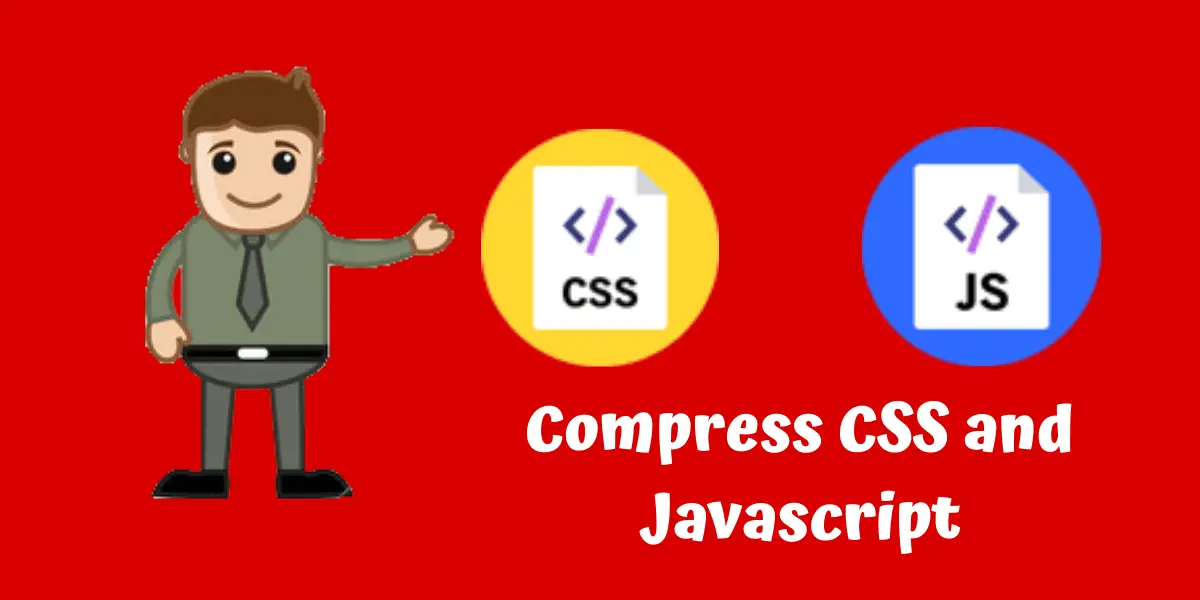
You must minify javascript and CSS files to make the website load fast. Use a minifier that reduces whitespaces, strips comments, combines files and even optimizes common programming patterns.
You can minify HTML with the HTML minifier. Use CSSNano to minify CSS and UgilifyJS to minify Javascript. When minifying javascript and CSS files, no minification is done to the code. Comments, line breaks, unnecessary spaces, and other white spaces are removed from your code. Output javascript is functionally identical to source javascript.
Minification reduces the size of javascript, making application download speed lesser. This reduces download time for javascript files and improves performance. Minification improves site speed and user experience.
To make javascript run faster create shortcut codes, save bytes through minification, use nested loops only if required, cache objects, return 304 when appropriate and use .js files to cache scripts. You can optimize CSS files by minifying CSS, using image sprites, putting CSS at the top and javascript at the bottom, splitting CSS files, reducing whitespace and documenting and organizing code.
i) To minify the JavaScript codes, reduce the scripts in the header and use in the footer because Google cannot understand JavaScript file and takes the time to skip JavaScript files which are present in the header. So moving the JavaScript files from header to footer will improve the website speed.
To compress JavaScript files use the javascript compression tool to reduce the size of the JavaScript file size.
To compress CSS code use the CSS compression tool to reduce the size of the CSS file
If you need to implement this method, you can go for CloudFlare CDN service and follow the steps to implement on your site but upto limited data plan, CloudFlare is free to use.
There are other free CDN libraries to access and use on the website
i) For bootstrap use the bootstrap Framework codes to create beautiful web pages.
CSS: https://maxcdn.bootstrapcdn.com/bootstrap/3.3.6/css/bootstrap.min.css
JS: https://maxcdn.bootstrapcdn.com/bootstrap/3.3.6/js/bootstrap.min.js
ii) For Jquery file with the built-in jQuery function from the Google libraries
<script src="https://ajax.googleapis.com/ajax/libs/jquery/2.2.4/jquery.min.js"></script>
Use cache optimization
A cache is a software component that stores data. The more cache there is, the more data can be stored closer to CPU. Cache optimization improves cache performance.
So why cache optimization? A cache is a way of temporarily storing web page content at locations closer to the user. This is just like the way your memory works. Cache optimization speeds content downloads and delivers a faster and better web experience.
If your site is developed using WordPress Technology, you can use one of the top cache plugins like w3 total cache or super cache plugin. This plugin works when a user request the web page the cache plugin serves the static file instead of accessing web page contents from the server. Also, it takes responsibility to optimize the webpage.
Upgrade shared hosting to VPS or dedicated server

In shared web hosting, many users share a single physical server and the resources. This is great if you don’t receive much incoming traffic. All tools and modules for common web applications are pre-installed. This makes setting up a new website, really easy.
If your website is running on shared hosting the speed may not actually be super fast because, if more visitors are entering your web page beyond the capacity level, it increases the load time on your server. Even if you have implemented on the website Optimisation techniques may not work.
The Virtual Private Server or VPS is a shared server platform that mimics all the features and also the functions of a dedicated server. It has its own operating system and customers have full access to administrative privileges. You can customize the VPS any way you like.
VPS is great if:
- You have a lot of incoming traffic: If you get hundreds and thousands of hits a day, you need an upgrade.
- You are serious about your SEO ranking: If you have a shared hosting plan, hundreds of other sites share the IP. Sites with bad ranking which use the same IP, damage your SEO ranking.
- Your application needs more resources: Move to a VPS platform if your application needs more resources. There are many customization options available like operating system, amount of RAM and hard disk space and of course, control panels.
- You need administrative access to the server: In shared hosting, you don’t have complete administrative access. After you move to the VPS plan, you have Root access for Linux and administrative access for Windows.
- You need dedicated IP and more security:
With dedicated IP there aren’t other customers or domains using your dedicated IP. This increases security as harmful or abusive activities of other customers won’t affect you.
Switch to AMP design
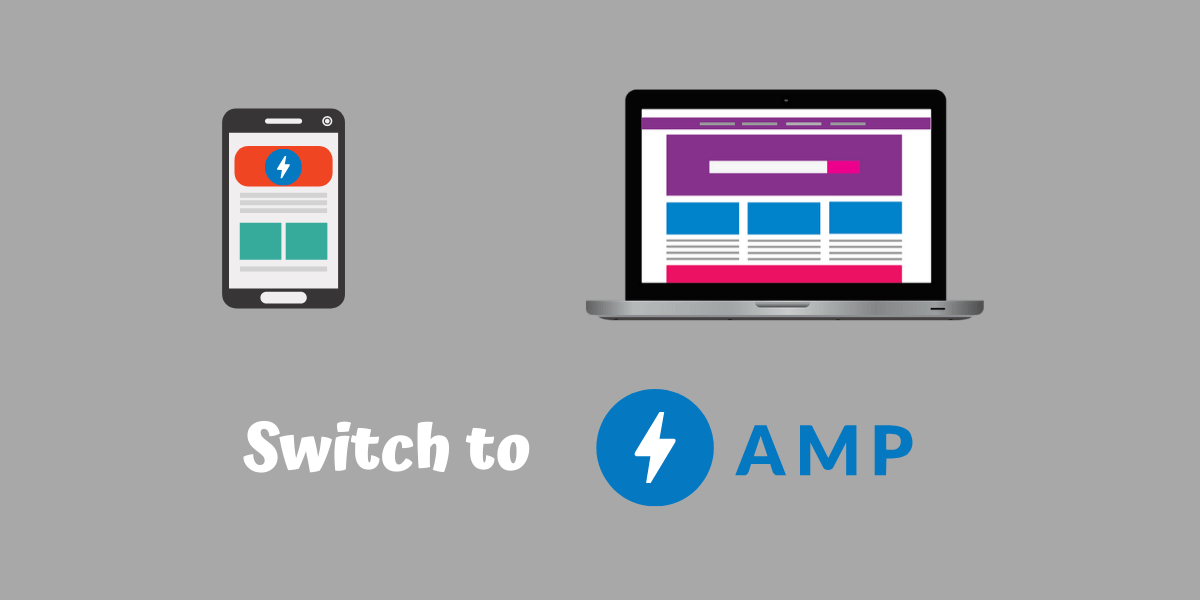
AMP or accelerated mobile pages is an open-source HTML framework that offers a straightforward way of creating web pages. These are fast, smooth-loading and also prioritize user experience.
Switching to AMP design improves user experience and core business metrics. Building AMP is easy as you can convert the entire archive in days. You can apply AMP across web touchpoints.
So why switch to AMP design? AMP enables quicker page loading which is 85% faster, improving user experience. This means higher search rankings as users enjoy a better experience. Most people access websites through mobiles and AMP is geared towards mobile users. AMP websites generally have a higher potential of getting click-through-rate. They appear on the ‘top stories’ results and have a special badge on google. To use AMP you must be able to edit your website’s code and understand HTML, CSS, and javascript. Use a CMS which offers AMP support.
Use a simple theme from WordPress
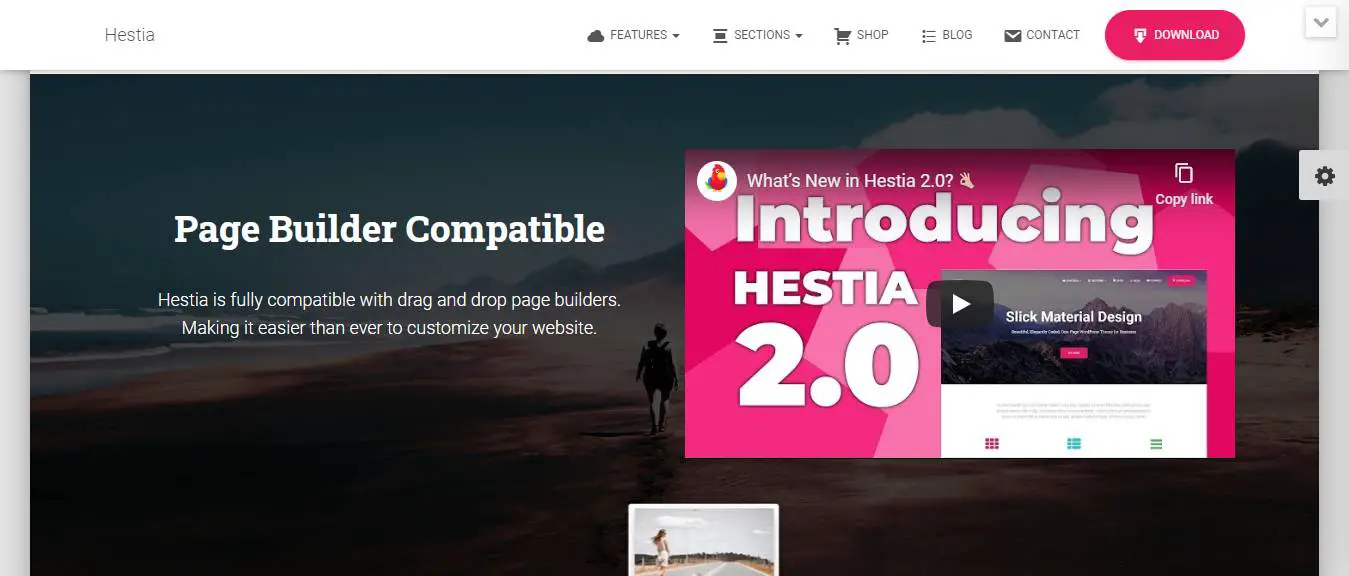
The theme is the face of your site and is very important for users and search engines. The simple theme offers a simple, clean and minimal layout increasing website speed. Website themes may have flashy animations, complex layouts and lots of colors that reduce website speed.
Opt for a simple theme presentation style. The main purpose of web design is for users to find what they seek and for you to achieve your goals. Test theme responsiveness by not resizing the browser. When you resize the browser screen you find theme layout adjusting to screen width. A simple theme:
- Highlights important content
- Gives a professional look to your site
- Focuses on important things.
Reduce URL redirects: Redirects are instructions that automatically take visitors from one URL to another. Redirects make webpages load slower as time is wasted to go to another place. Redirects cause performance issues and reduce speed, especially for mobile users. Clean up redirects to increase web speed. Redirects using http-equiv= ‘’refresh’’ attribute introduce long waiting periods and must not be used. Google says eliminate redirects unless they are absolutely necessary. Find redirects and see the effect on your site. If its affecting speed, eliminate or update URL redirects.
Enable Gzip compression: This is a method of compressing files to enable faster network transfers. Gzip compression allows a web server to provide smaller file sizes which means faster loading and better user experience. Gzip takes a chunk of large data and makes it smaller. When in use, bandwidth charges for offering the service go down as people download smaller files. Gzip can compress any file. Just set the gzip setting on the server and enjoy faster website speed.
Incredible facts about website speed:
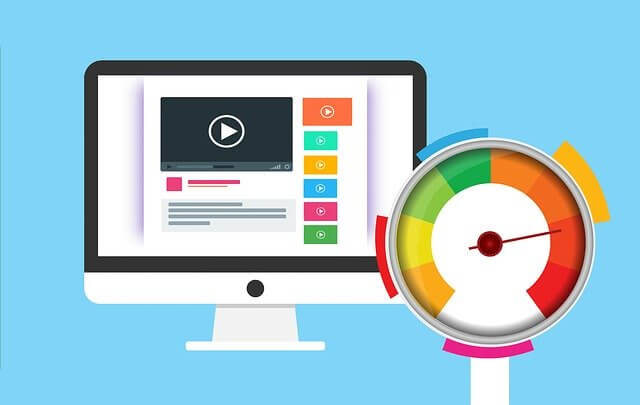
- Users love websites that load fast. They spend 70% more time on such websites and these sites have 60% more viewers.
- More than 70% of websites take more than 10 seconds to load on your mobile phone.
- More than 40%-47% of people abandon a website if it takes more than 3 seconds to load. They close the page immediately and move to the competitor's site. So in order to avoid it, the website owner should take the responsibility to improve the website to load faster.
- More than 50% of online shoppers love a website that loads fast. This is very important for site loyalty.
- If a customer is faced with a bad mobile shopping experience, he would move to a rival.
- If your mobile site loads in 5 seconds, you could earn 2x more mobile ad revenue than a site that loads in 19 seconds.
- For google, speed is revenue.
- The site PageSpeed has a direct impact on Adword campaigns.
- According to the new Google Webmaster guidelines, search engine recommends loading faster lesser than 2 seconds for especially mobile users than any other device. So you have understood the basic facts of website speed, now the user responsibility is to make sure to follow the techniques to increase website speed.
Conclusion
Website speed is an important factor for user experience and SEO. It’s not just about making your website faster, but also about making sure that it’s reliable and secure.
In this article, we have discussed the various steps that can be taken to increase website speed 5x faster. We have looked at ways to optimize code, reduce server response time, use a content delivery network (CDN), and minimize redirects. We have also discussed how caching can help improve website performance.
By following these steps, you can make sure that your website is lightning-fast and optimized for performance. This will ensure that users have a great experience on your site and will help you rank higher in search engines as well.
Before optimizing your website speed, you can test your website speed using our website speed test tool




